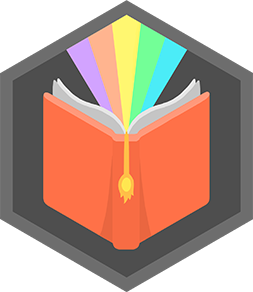Interview an author
Research an author, write thoughtful interview questions, practice asking them politely, then conduct and record the interview or summarize the author's answers.



Step-by-step guide to interview an author
Introducing: Lee Child – Writing Popular Fiction – BBC Maestro
Step 1
Pick one author you are excited about and write their name at the top of your notebook.
Step 2
Find five facts about the author using a book or a reliable website and write each fact on a new line.
Step 3
Think of 8 to 10 interview questions and write them down in your notebook.
Step 4
Change any yes or no question into an open question that starts with who what when where why or how.
Step 5
Add one friendly opening question and one thank-you closing question to your list.
Step 6
Ask an adult to help you contact the author or the author’s representative to request a short interview.
Step 7
Choose whether the interview will be in person by phone or by email and tell the adult your choice.
Step 8
Practice asking your questions out loud with a family member or in front of a mirror.
Step 9
Get your notebook sticky notes and pencil ready before the interview starts.
Step 10
Greet the author politely at the beginning of the interview.
Step 11
Ask the author if it is okay to record the conversation or to take notes.
Step 12
Ask each question from your list one by one and listen carefully to every answer.
Step 13
Thank the author for their time at the end of the interview.
Step 14
Write a short summary of the author’s answers in your notebook using complete sentences.
Step 15
Share your finished interview or summary on DIY.org
Final steps
You're almost there! Complete all the steps, bring your creation to life, post it, and conquer the challenge!


Help!?
If we don't have a notebook, sticky notes, or a recorder, what can we use instead?
Use loose-lined paper stapled together or a clipboard in place of a notebook, small index cards or torn paper for sticky notes, and a smartphone or tablet voice recorder (or plan to take handwritten notes with your pencil) for recording the interview.
What should we do if the author doesn't respond or is unavailable when the adult helps contact them?
Ask the adult to try the author's publisher or official website for a representative, offer to do an email interview instead of phone or in person, or use published interviews and write your summary from those sources as instructed.
How can we adapt the activity for younger kids or make it more challenging for older kids?
For younger kids, find three simple facts, write 4–5 friendly questions, and practice aloud with a parent using drawings as prompts, while older kids can research more facts, create 10+ open-ended questions, request permission to record, and write a detailed summary to share on DIY.org.
How can we extend or personalize the interview after we write the short summary?
Turn your summary and the five facts into an illustrated one-page author profile, include audio clips or quotes from the recorded interview if allowed, make a handwritten thank-you card, and then post the finished interview or summary on DIY.org.
Watch videos on how to interview an author
Writing Books for Children – David Walliams – BBC Maestro
Facts about interview skills for kids
✍️ Many authors begin stories with a single 'what if' idea or a notebook full of tiny prompts.
🎤 Author interviews can be live, written, over email, or recorded as podcasts — choose the format that makes the author comfortable!
🕰️ Lots of famous writers use short daily routines (even 20–30 minutes) rather than long all-day sessions.
📚 Most adult novels fall between about 70,000 and 100,000 words — asking about length or pacing is a great question.
🎧 Recording an interview helps you focus on listening — podcasters often edit long conversations into shorter highlights.
How do you conduct an author interview with a child?
What materials do I need to prepare for an author interview activity?
What ages is interviewing an author suitable for?
What are the benefits and safety tips for children interviewing an author?


One subscription, many ways to play and learn.
Only $6.99 after trial. No credit card required

